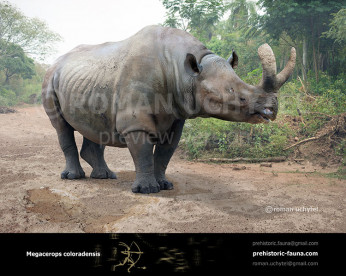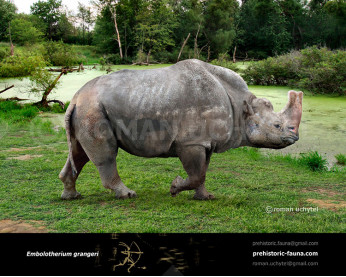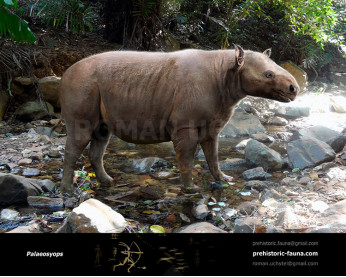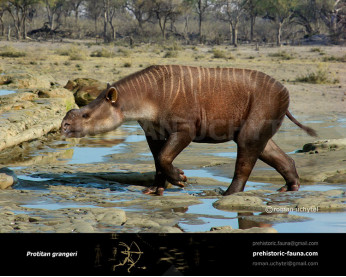Embolotherium andrewsi
1616Embolotherium andrewsi (Embolotherium andrewsi Osborn, 1929)
Order: Perissodactyla
Family: Brontotheriidae
Size: 4 m in length, 250 cm in height, 2000kg of weight
Time period: the Late Eocene (Mongolia)
Typical representative: Embolotherium andrewsi Osborn, 1929
Embolotherium (meaning "battering ram beast", or "wedge beast") is an extinct genus of brontothere that lived in Mongolia during the late Eocene period. It is most easily recognized by a large bony protuberance emanating from the anterior (front) end of the skull. Embolotherium was one of the central Asian representatives of the family of large herbivorous mammals known as brontotheres ("thunder beasts"), which were ancient (and distant) cousins of the modern rhinoceros. Of all the brontotheres (which also included Brontotherium), Embolotherium had the most distinctive "horn," which actually looked more like a broad, flat shield sticking up from the end of its snout. As with all such animal accoutrements, this odd structure may have been used for display and/or to produce sounds, and it was doubtless a sexually selected characteristic as well (meaning males with more prominent nose ornaments mated with more females).
Embolotherium andrewsi (Embolotherium andrewsi Osborn, 1929)
Order: Perissodactyla
Family: Brontotheriidae
Size: 4 m in length, 250 cm in height, 2000kg of weight
Time period: the Late Eocene (Mongolia)
Typical representative: Embolotherium andrewsi Osborn, 1929
Embolotherium (meaning "battering ram beast", or "wedge beast") is an extinct genus of brontothere that lived in Mongolia during the late Eocene period. It is most easily recognized by a large bony protuberance emanating from the anterior (front) end of the skull. Embolotherium was one of the central Asian representatives of the family of large herbivorous mammals known as brontotheres ("thunder beasts"), which were ancient (and distant) cousins of the modern rhinoceros. Of all the brontotheres (which also included Brontotherium), Embolotherium had the most distinctive "horn," which actually looked more like a broad, flat shield sticking up from the end of its snout. As with all such animal accoutrements, this odd structure may have been used for display and/or to produce sounds, and it was doubtless a sexually selected characteristic as well (meaning males with more prominent nose ornaments mated with more females).

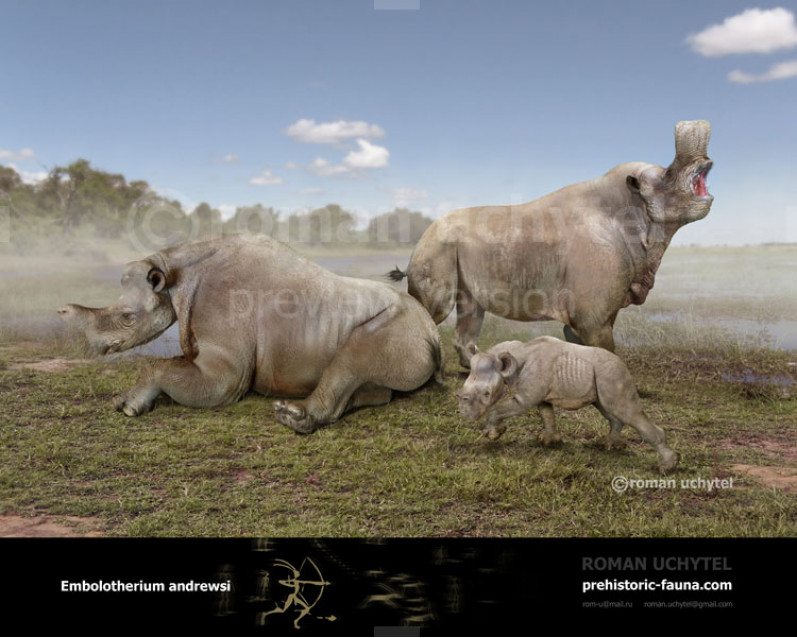
-797x638.jpg)
1-797x638.jpg)
-797x638.jpg)

-70x56.jpg)
1-70x56.jpg)
-70x56.jpg)
